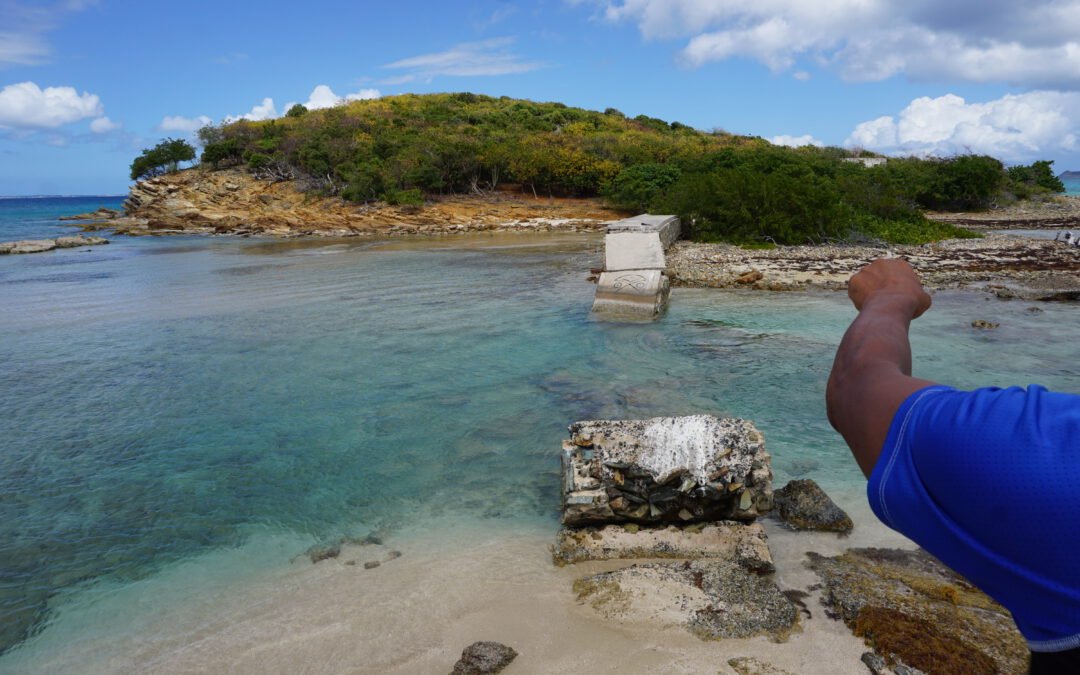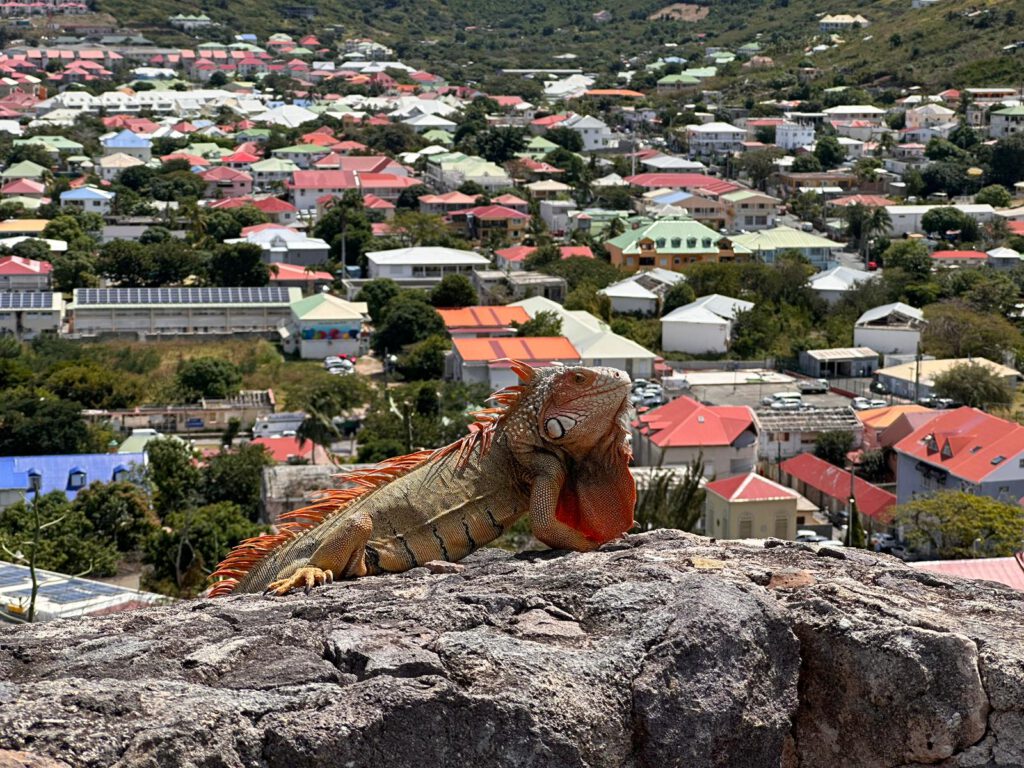
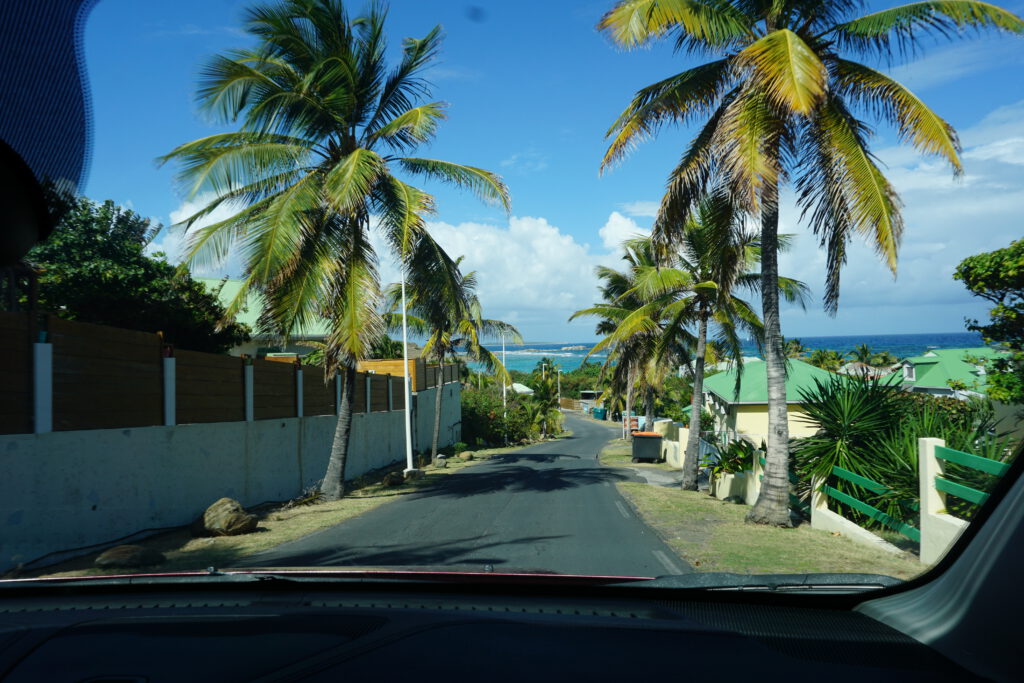
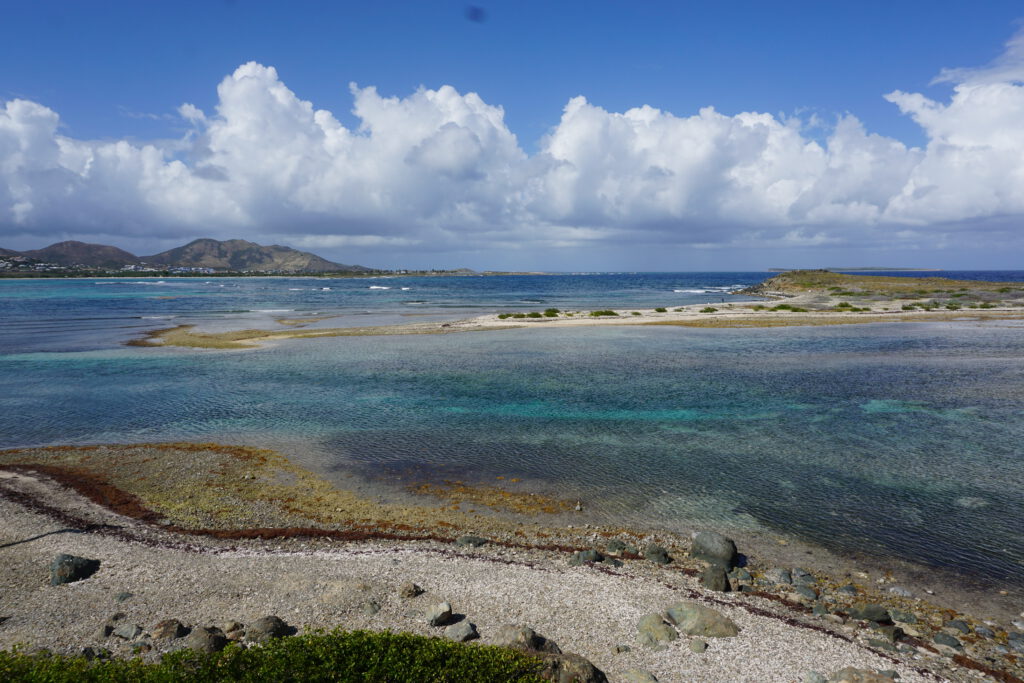
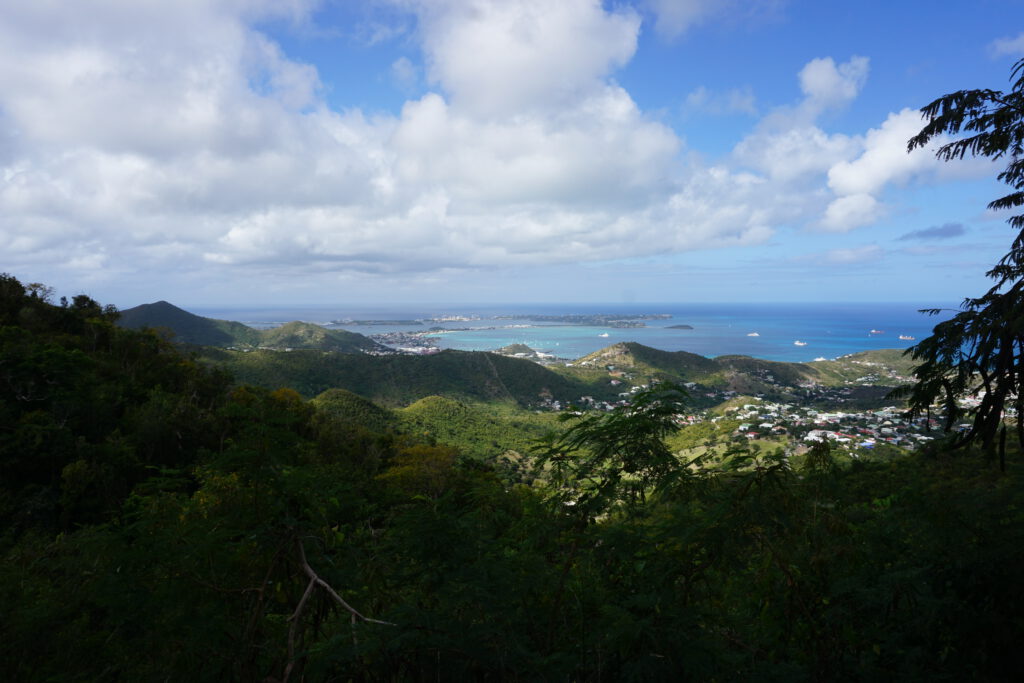
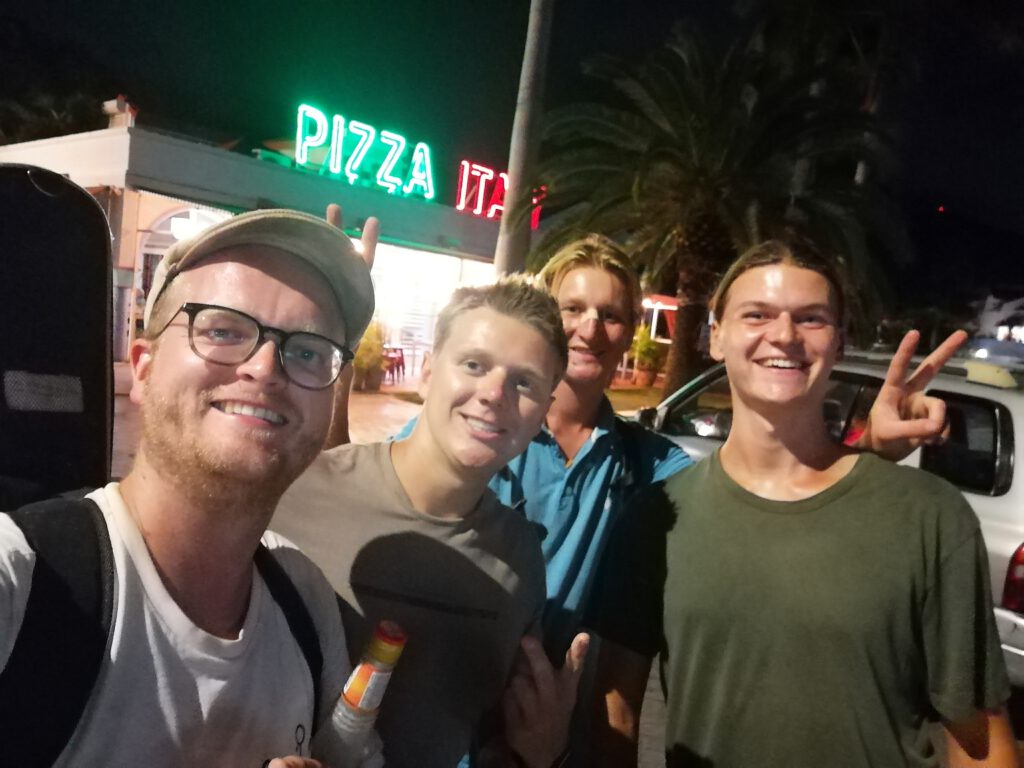
On 21 February, I arrived with Simon on his windsurfing sailboat off St Martin towards evening.
The island is the smallest territory in the world that is shared by two states. For a long time, this was France and Holland, who conquered the island in their colonisation mania and divided it between themselves in 1846. According to legend, one soldier from each nation was sent in opposite directions around the island to determine the border, and the border was then set where they met. Allegedly, both were properly influenced by rum, but since the Dutchman staggered more than the Frenchman, the French part of the island is larger.
Since 2010, the Dutch part, called Sint Maarten, has been independent, but remains part of the Dutch kingdom, so the Crown continues to look after St. Maarten’s military and foreign affairs. There is therefore a different currency, the Gildern, which also exists in Curacao, another former Dutch colony. Since on the French side you pay in euros and the island is haunted by an enormous number of US-Americans who don’t want to give up their dollars, the supermarkets have prices in 2 – 3 currencies – complicated…
The capital on the French side, where there is more beautiful nature and beaches, is called Marigot. Marigot is a dreamy little town, overlooked by a fortress with a French flag. Apart from a few restaurants and shops, there is a tourist market that pretends to be local and traditional, and otherwise there is not much going on in Marigot. The Dutch side, which is in the south, has less spectacular nature, but the party: in the capital Philipsburg, a bit bigger but still a small town, sometimes up to 10 cruise ships dock a day. Then the city and the whole island are flooded with tourists for a day, but by late afternoon they have to get back on the ship. It’s hard to imagine that they could miss their all-inclusive buffet and the musicals on board. So Philipsburg is empty in the evening and many bars and restaurants close before 6pm.
Those who want to experience something in the evening do not stay in Philipsburg but go to Simpson Bay. The border runs through the bay to the west and on the Dutch side there are many bars with live music, restaurants, nightclubs and a few strip clubs. When I write Dutch side, it is because of the continued strong Dutch influence in language, military, etc. Right next to Simpson Bay is Mahau beach, one of the island’s tourist hotspots, because the airport runway starts right behind the beach, so that the planes sometimes fly only 10 to 20 metres overhead. Admittedly a spectacle. But if you look at the frequency of the planes on this small Caribbean island, it makes you sick. Private jets in particular take off and land here with a frequency I have never experienced. In the first hour when Simon and I arrived, I saw at least 10 private jets…
The harbours on the Dutch side look similar: one motor luxury yacht lines up next to the other and you could almost think there is a competition to see who has the uglier boat (somewhat coloured from my sailing glasses) and who pollutes the environment the most with their boat. I didn’t like this side of St. Maarten at all and wished myself back to the sailing port of Le Marin in Martinique, where such a motor yacht always looked out of place. For my street music, all the money that undoubtedly comes to St. Maarten was not so bad. So I was able to raise quite a lot of money in a few afternoons/evenings and found two local projects to support with it. I write more about this in my post about street music.
When Simon and I anchored in Simpson Bay on Wednesday, I was able to meet Riki and Martin, who had contacted me through a Facebook ad, just a few hours later. The two of them have been sailing around the world since 2018 and have been joined in the last two years by Kira (3) and Naia (1). They moved in on their boat Aracanga just over a year ago, as the previous one was too small. I got on very well with all four of them straight away and they quickly agreed that I could sail with them to the Dominican Republic – ideal for me, as that was exactly where I wanted to go next and so I didn’t have to spend any time looking for a boat, but had more time to explore St Martin.
After moving into my bunk on the Aracanga and spending a nice evening with the new crew and some friends, I moved out again for 3 days to stay with a couchsurfer. Marlov was born in Curacao, grew up in the Netherlands and has lived in St. Maarten for about 10 years. He kindly made several trips with me and showed me around the island in his car. In 44km we drove once around the island with several detours. Marlov told me a lot about the different places and the history of the country. During a hike, we were able to observe monkeys three times, which are actually rarely seen on the island.







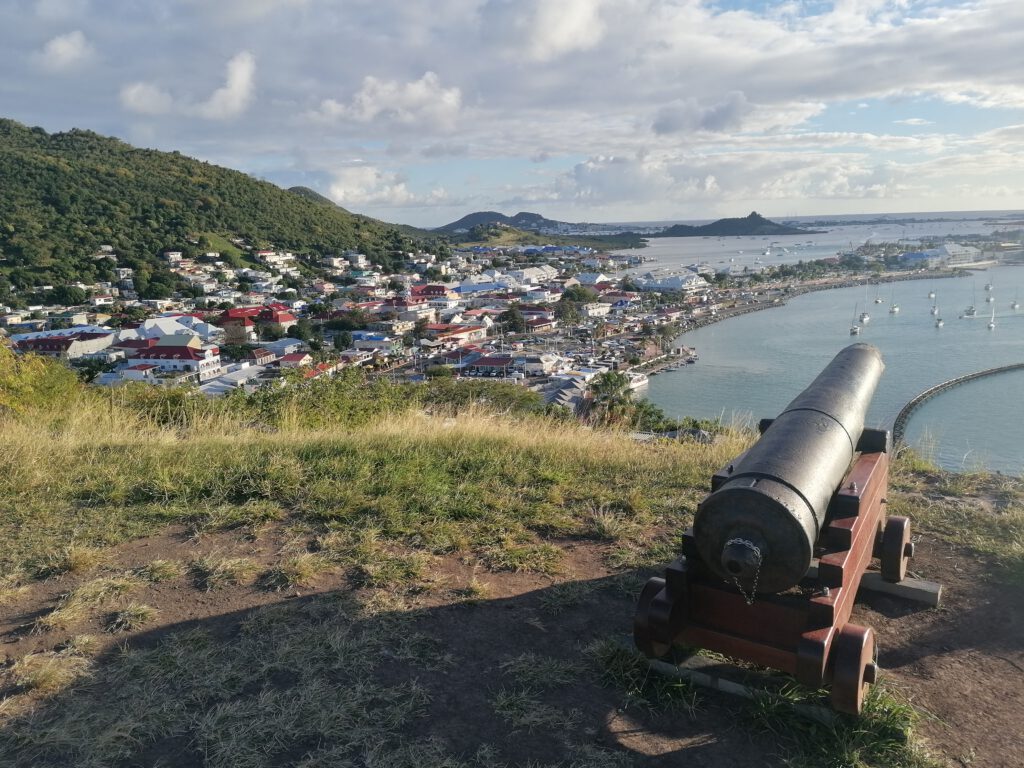
The Hurricanes Irma and Luis and it’s consequences
One topic that you inevitably come across again and again on the island is hurricanes. For anyone living in the Caribbean, hurricanes are part of life and everyone experiences several in their lifetime. The last two major hurricanes to devastate St. Martin were Luis and Irma. Luis caused 3.3 billion US dollars worth of damage in 1995. 9 people died and over 20,000 were left homeless. Most of the damage from Luis is no longer visible today, but in one place on the island, you can still see the aftermath: La Belle Creole. The former luxury resort, which resembled a small village, was completely destroyed by the hurricane and never rebuilt. The ruins can still be seen today. Construction of La Belle Creole, located on the French side of Simpson Bay, began in the 1950s. But several times the money ran out and well-known investors like Hilton bailed out. It was not until 1986 that the resort was completed, before it was razed to the ground again 9 years later. Several migrant workers are said to have died during the construction.
Many locals say the village is cursed and avoid it. Some say it was built on a former Arahawk cemetery, the first settlers of the Eastern Caribbean islands. Others claim that an offshore island was once used for the exile of lepers and that the village is therefore cursed. Either way, a troubled history for such a small village. Hurricane Irma in 2017 was far more monstrous than Luis and caused more damage: over 100 people lost their lives, thousands were left homeless and the damage amounted to around US$77 billion across the Caribbean. While the luxury resorts were rebuilt at lightning speed to quickly bring tourism back to the island, many of the local people’s homes have not been repaired to this day. Many of them were not sufficiently insured or not insured at all – here you can see again the strong contrast between rich and poor in St. Martin and St. Maarten.

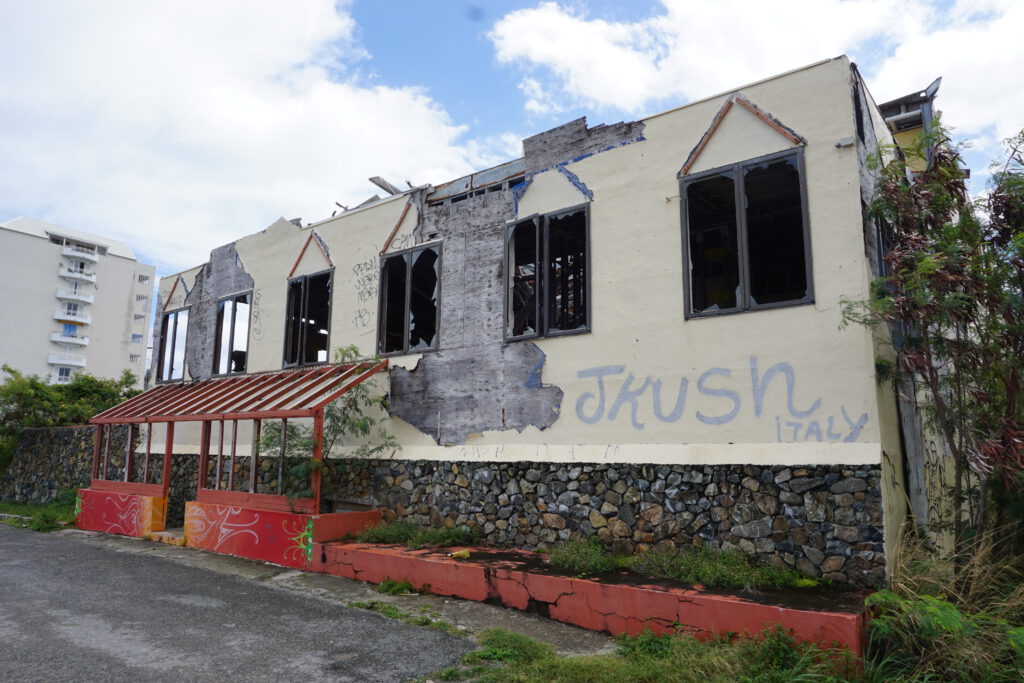
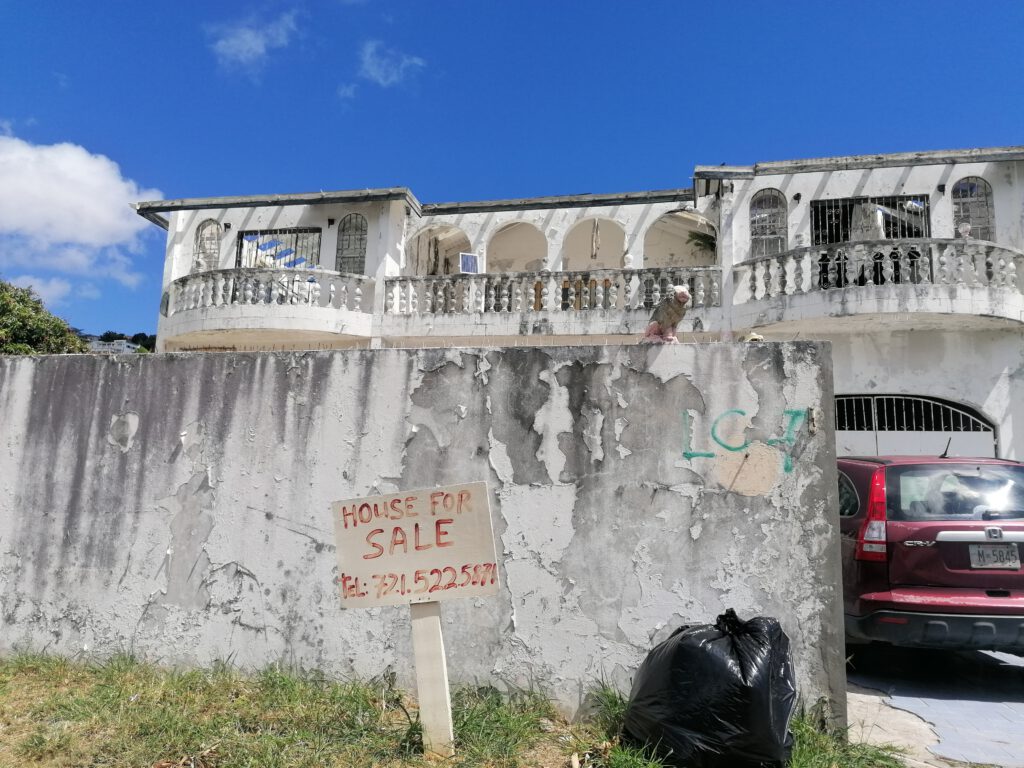
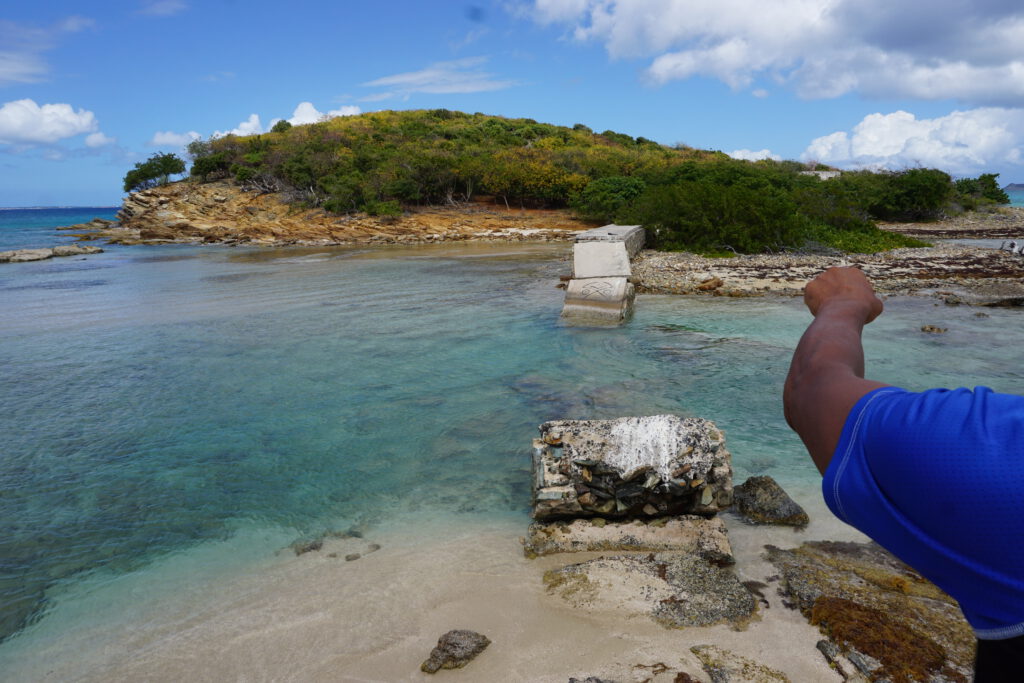
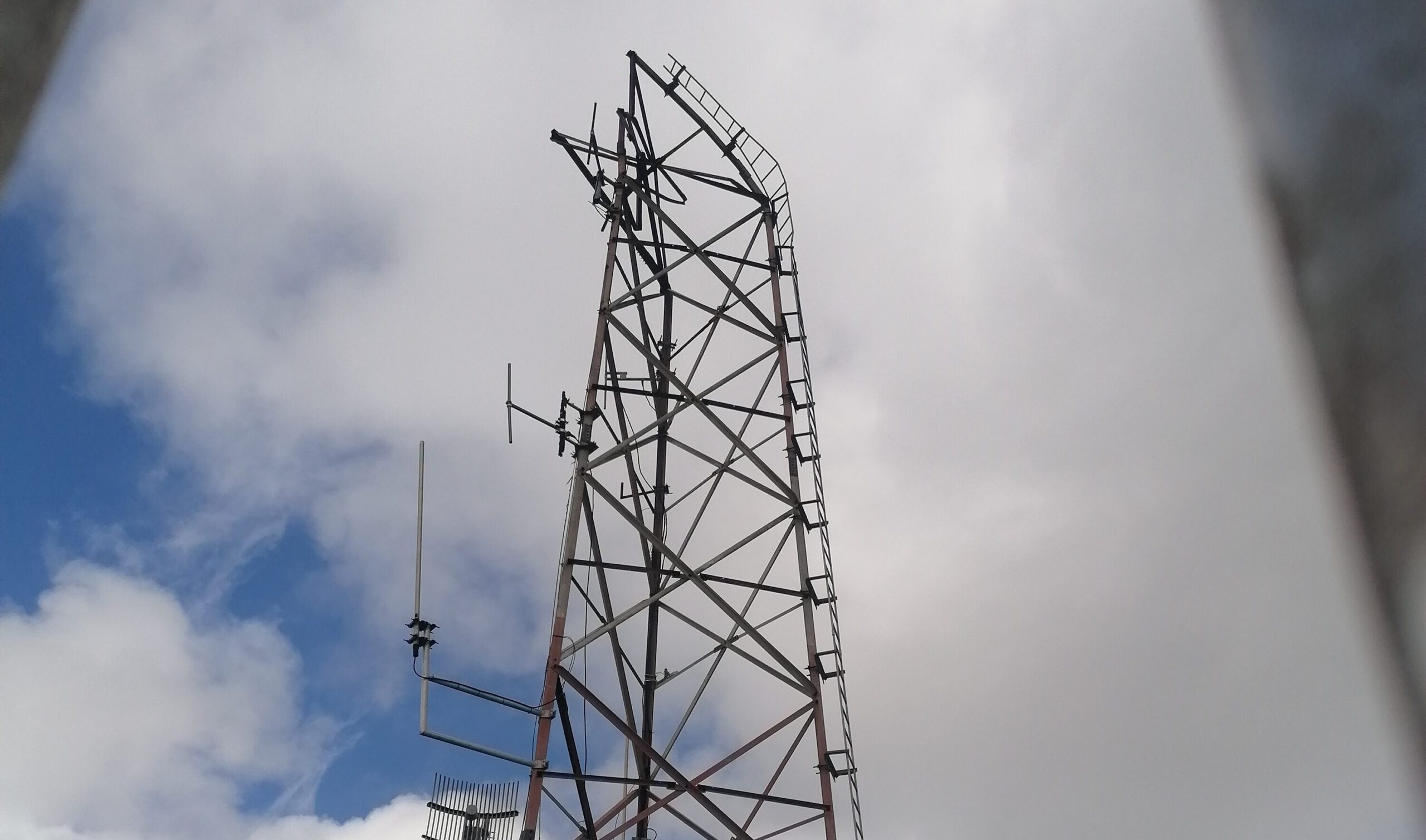
But what is it actually like to be in a hurricane? I heard some reports from Marlov and others about what happened with Irma. Such a hurricane doesn’t come out of nowhere and so the inhabitants are warned a few hours or even days in advance. The super-rich then leave the country in droves and come back after the storm to see what has been broken. Some of those who can afford it go to a hotel for the time of the storm. But you only find out after the storm whether you’ve put your money on the right card. Some were injured by debris in the hotel and then found their own house intact later.
Most people spend the hurricane in their own house and look for a place that is as safe as possible. I heard of a man who had a neighbour lock him and his children in the shower so that he would not be tempted to come in before the hurricane was over. A great danger is the eye of the storm, as Marlov explained to me. The hurricane starts with rain, a short time later the pressure increases and the windows really bend inwards, making it harder to breathe. And only then does the real storm come, sweeping around at speeds of up to ??? and smashing many things to pieces.
After several hours, the storm suddenly decreases and some think it is over. But when the eye of the storm is over, the second half starts and the wind comes from the opposite direction. Whoever then went out because he or she thought it was over is in grave danger.
After the time with Marlov, I went back to the Aracanga, spent a few more relaxing days there before we sailed off. I was able to play a concert in the Lagoonies sailing bar and now I’m looking forward to moderate prices and speaking Spanish in the Dominican Republic.

